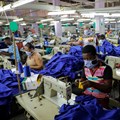According to Euromonitor International global inflation is expected to range between 6 and 9% in 2022, compared to an annual average of 3.8% from 2001 to 2019.

Source: 123RF
Inflationary pressures have been rising since 2021, reaching a record level in many countries, and above central-bank target rates in some advanced economies.
Surging demand for goods, pandemic-induced disruptions, rising energy prices, and labour shortages have led to severe supply-demand mismatches.
We expect inflationary pressures to remain high in African markets like most global key economies, as some supply-demand mismatches and high unemployment rates could last throughout 2022, while the spill over effects of the war in Ukraine and economic sanctions on Russia have exacerbated this inflationary environment, particularly for energy and food prices.
Here is a perspective on the key inflation drivers that are impacting the current inflationary environment in South Africa and Nigeria:
South Africa
Food
Prices of imported essential food products continue to soar, driven by the war-induced shortages in supply, with the main products driving the increase being bread, breakfast cereals and cooking oil.
The supply shortages are mainly driven by the global dominance in exports of wheat and sunflower oil: while Russia and Ukraine together export over a quarter of the world’s wheat, they also account for over 50% of the world’s sunflower-oil production, the most popular cooking oil in South Africa.
This implies that any supply shock to wheat or sunflower oil in the region is bound to negatively impact the rest of the world. Locally, we have seen the average price of ‘Sunfoil’, one of the leading edible oil brands on the market, rise by almost 50% since the beginning of the year. Similarly, the price of ‘Sasko’ bread, a well-loved household brand, has increased by almost 11% in the same period.
Prices of these essentials are set to continue rising during 2022, as supply takes time to catch up, while uncertainties remain over when war will cease in Ukraine.
Fuel prices
Inflationary pressures are further mounting for transport costs reflecting strong increases in the fuel price. Fuel prices reached a record-high this year in March (up by 33.2% since a year ago), as international oil prices soar, driven by the war in Ukraine.
Government has even stepped in to reduce the burden on consumers, by temporarily cutting the General Fuel Levy (GFL) by R1.50. As the war remains unresolved, the risk for further price increases is imminent during the year, especially as the GFL reduction is only in place until the end of May.
There was some reprieve for South Africa as increasing oil prices were slightly cushioned by a stronger local currency. The latter was on the back of rising commodity prices of gold, coal and platinum (which are South Africa’s top three exports), also as a result of the war in Ukraine increasing demand.
That said, further pressures are expected, and there is a high risk of currency depreciating given policy uncertainties and volatile global markets. In response, the Monetary Policy Commodity (MPC) has hiked interest rates for a third consecutive time this year to remain ahead of mounting inflationary pressures, and also following global trends of tightening monetary policy.
The MPC considers a weakening rand a strong potential threat to the current inflationary environment, and further increases are expected this year. Along with below potential economic growth levels, high unemployment rates and mounting inflationary pressures, South African consumers are set to face a challenging 2022.
Electricity
Electricity prices continue to rise, as Eskom direct customers absorbed a 9.6% tariff increase from 1 April, while there is a proposed increase of 7.5% for municipalities, which is set to kick in on 1 July 2022.
Rising electricity costs are set to negatively impact South African consumers, who have been under severe pressure since the outbreak of the pandemic, with many losing their jobs or experiencing pay-cuts. Furthermore, businesses may be forced to increase their prices, to account for rising overheads, which will place a further burden on consumers.
Rachel Savage 14 Apr 2022
Nigeria
Food
As of last year, wheat was Nigeria’s second largest imported product after petrol, implying that inflationary pressures have been elevated due to the supply shortages in Russia and Ukraine, caused by the invasion. Inflation reached 15.9% in March 2022, up from 15.7% in February, and will likely increase further as a result of the Ukraine war. In addition, Nigeria faces a severe dollar shortage, which further exacerbates price increases.
Fuel
Oil is one of the major drivers of the Nigerian economy and the four refineries in Nigeria are not producing, resulting in the importation of refined petroleum products to the country. While the government still subsidises the cost of imported petrol, diesel, which most businesses use for their day to day operations due to the unstable power supply in Nigeria, is not subsidised.
The increasing hike in diesel cost due to supply disruptions and rising oil prices has led to manufacturers and other businesses transferring the increasing cost to the consumers. In some cases, some businesses have shut down or reduced the hours of operations. For instance, some banks in Nigeria have reduced their working hours due to the high cost of running on diesel for the whole day.
The sub-standard fuel that was imported to the country in February 2022 resulted in fuel scarcity and gradual increase of long queues in the filling stations, which was later compounded with the emergence of the war between Russia and Ukraine leading to adverse scarcity which spawned to hikes in transportation cost as well as rise in prices of goods and services.
The subsidy on imported petrol by the government has also affected the country’s foreign reserve as the dollar continues to appreciate against the local currency, making imports more expensive. And as oil prices rise on international markets, the country needs more foreign exchange to support the subsidised imported petrol which has resulted in the scarcity of foreign exchange and balance of payment deficits.
Nigeria is also a net importer of finished goods such as electronics and appliances (to name a few), which must be purchased using foreign exchange, which is in scare supply. Therefore, the rising cost of sourcing foreign exchange (driven by the depreciation of the Naira) to buy imports results in a high cost of goods being imported to the country.
Ultimately, these costs are passed on to consumers at higher prices, driving inflation.


























